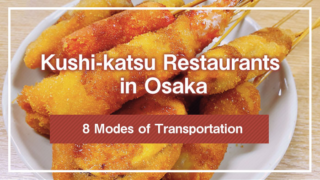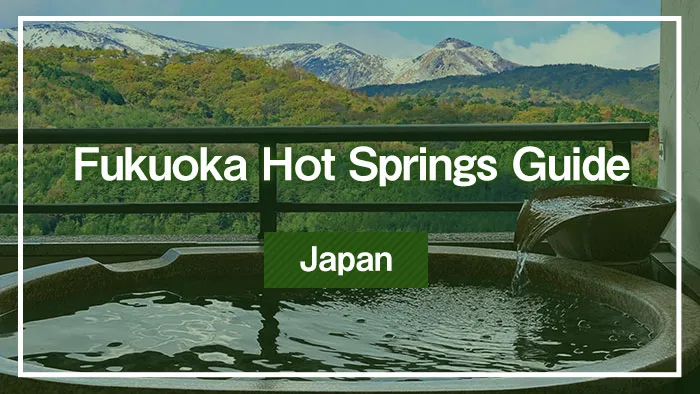Fukuoka, the gateway to the Kyushu region, is an attractive tourist destination known for its rich food culture including Hakata Ramen and Motsunabe. While Fukuoka’s cuisine stands out, the area also boasts abundant nature and several hot spring locations. Some hot springs are conveniently located in urban areas, while others are known for their beauty benefits surrounded by nature.
This article introduces six hot springs in Fukuoka that are perfect for relaxing during your journey. We’ll also explain hot spring bathing procedures to help make your visit more enjoyable.
1. Recommended Hot Springs in Fukuoka
Fukuoka features various hot springs scattered throughout the area that are perfect for those wanting to relieve travel fatigue or enjoy a relaxing time. One of the attractions is the diversity of hot springs, from those near tourist spots to those surrounded by nature.
Below are our recommended hot springs to visit in Fukuoka.
1-1. Chikugogawa Hot Spring
Chikugogawa Hot Spring is located in Ukiha City, Fukuoka Prefecture, in a nature-rich area often called “Hakata’s inner parlor” due to its peaceful atmosphere. At Chikugogawa Hot Spring, which spreads along the quiet flow of the Chikugo River, visitors can enjoy tranquil moments while listening to the murmuring stream.
Around the hot spring town, there are farms where you can enjoy fruit picking from spring to autumn, with strawberries, peaches, and grapes available depending on the season. In summer, the famous cormorant fishing takes place, creating a fantastical scene along the riverside at night.
Nearby attractions include Kiyomizu Temple and Choane Falls, allowing visitors to enjoy history and nature alongside the hot springs. This is the perfect hot spring area for those seeking to relax both body and mind in a serene setting.
1-2. Harazuru Onsen
Harazuru Onsen is a peaceful hot spring town situated on the banks of the Chikugo River, at the border between Fukuoka and Oita Prefectures. The name “Harazuru” comes from a legend about cranes bathing in the riverbank hot springs, giving the area its nature-embraced, atmospheric charm. Seasonal attractions abound, including spring cherry blossoms, summer cormorant fishing and grape picking, autumn foliage and persimmon picking—offering different experiences with each visit.
Harazuru Onsen is known as a “Double Beauty Hot Spring” featuring two types of springs: weak alkaline simple hot spring and simple sulfur spring. Both contain components that soften the skin’s outer layer and provide a smooth feeling, making the post-bath comfort popular among visitors.
1-3. Hakata Onsen
Hakata Onsen is an urban hot spring with abundant water volume and tranquility despite being located within Fukuoka City. Located in Minami Ward, Fukuoka City, Hakata Onsen opened in 1966. The source spring is 49 degrees Celsius, and its convenient location makes it perfect for a quick visit during city sightseeing. The spring quality is calcium-sodium chloride, characterized by slow-cooling water that feels gentle on the skin.
Ganso Moto-yu offers day bathing with a simple, local atmosphere that preserves the traditional therapeutic bathing culture. Fuji no En, which offers accommodations, features flowing hot spring water drawn from just 5 meters from its own source. The bath water is replaced daily, and the facility is equipped with multiple indoor and outdoor baths as well as a low-temperature sauna. This allows visitors to enjoy a luxurious, authentic bathing experience while staying in the city.
*The map above shows a hot spring facility, not the hot spring area
1-4. Funagoya Onsen
Funagoya Onsen, located in southern Fukuoka Prefecture, is a hot spring area where rare natural carbonated springs flow. Situated in a quiet environment surrounded by nature along the Yabe River, visitors can enjoy seasonal attractions like cherry blossoms in spring and fireflies and swimming in summer. It’s also conveniently accessible from JR Chikugo Funagoya Station and HAWKS Baseball Park Chikugo.
It was once feared as “Sparrow Hell” because sparrows would often fall after flying over the spring water. However, legend has it that the area developed as a hot spring destination after an elderly person suffering from an incurable disease was healed after drinking the water. The writer Natsume Soseki is also known to have visited this area on his honeymoon and left a poem behind. It’s a hot spring area where history and nature harmonize beautifully.
1-5. Futsukaichi Onsen
Futsukaichi Onsen, mentioned in the Manyoshu poetry collection, is a historic hot spring dating back to the Nara period. The spring quality is alkaline simple radium spring, known as a rare type in Kyushu. With a faint sulfur scent and smooth, moisturizing water, it has been loved by many people over the years.
While the hot spring boom has led to the development of hot springs in various locations in recent years, about 100 years ago, Futsukaichi Onsen was the most well-known hot spring in Fukuoka Prefecture. With good access from Fukuoka City, Futsukaichi Onsen is now popular among a wide range of visitors for tourism and day trips. It’s a healing hot spring area where you can spend peaceful time while experiencing history and nature.
1-6. Wakita Onsen
Wakita Onsen is a quiet mountain hot spring located along the Inunaki River in Miyawaka City, Fukuoka Prefecture. It is said that the poet Otomo no Tabito visited during the Nara period, making it a healing place decorated with history and nature. The spring quality is alkaline simple spring, known as a “beauty hot spring,” and some facilities may have a sulfur scent. The water is colorless and transparent with moderate slipperiness, and is popular for making skin smooth and silky after bathing.
One of its attractions is the natural beauty throughout the four seasons: cherry blossoms in spring, fireflies in summer, autumn foliage, and snow scenes in winter. At the representative inn “Nansuikaku,” guests can enjoy 10 different outdoor baths, experiencing the “spirit of hospitality” that has been passed down since its establishment. The adjacent hot spring facility “Yu no Zen no Sato” offers 9 distinctive outdoor baths and 5 private baths, making it perfect for families.
*The map above shows a hot spring facility, not the hot spring area
2. Procedures and Rules for Bathing at Fukuoka Hot Springs
At hot springs in Fukuoka and throughout Japan, there are procedures and manners to follow, such as washing your body before bathing and not putting towels into the bath. Hot springs are public places used by many people. It’s important to be considerate of others and know the basic rules to enjoy the experience pleasantly.
Below, we’ll introduce the bathing process and important points to note.
2-1. Preparation Before Entering
First, when you arrive at the facility, remove your shoes at the entrance and store them in the shoe cabinet or locker. Then, go to the changing room, take off your clothes, and store valuables in the provided lockers. To enjoy the hot spring with peace of mind, don’t forget to manage your key properly.
Bring necessary items such as towels, shampoo, and body soap to the bathing area. Some facilities may not provide these, so it’s reassuring to check in advance.Once in the bathing area, first perform “kakeyu” (water pouring). This involves scooping water from the bath and pouring it over your body, which helps acclimate your body to the hot spring and keeps the bath clean—an important manner.
2-2. Washing Your Body
After kakeyu, thoroughly wash your body and hair at the washing area.This is a basic manner to keep the bath clean and share the hot spring comfortably with other users. After using washing bowls and chairs, rinse them lightly with hot water and return them to their original places. Be considerate so that the next person can use them comfortably.
It’s also important to be careful not to splash foam or water around when showering or rinsing. Be especially mindful during crowded times or when people are next to you.
2-3. Bathing in the Hot Spring
When bathing in a hot spring, the basic approach is to quietly enjoy the water while being considerate of those around you. First, don’t put your towel in the bath. This is a manner to maintain the hygiene of the hot spring, and it’s common to either leave your towel outside the bath or place it on your head.
It’s also important to avoid occupying the bath for long periods or having loud conversations. Many people visit hot springs as a place to relax, so try not to disturb the peaceful atmosphere. Another rule is to avoid bathing when intoxicated or feeling unwell. Hot water can be particularly taxing on the body, and bathing after drinking or when in poor health can potentially harm your health.
2-4. Etiquette After Bathing
When getting out of the hot spring, lightly dry your body before returning to the changing room. Preventing the changing room floor from getting wet is an important manner to prevent slipping.
In the changing room, take turns using hair dryers and makeup areas. During crowded times, be considerate by not occupying spaces for long periods. To keep shared spaces clean, return used towels and amenities to their original places.
Finally, check that you haven’t forgotten anything and fix your appearance before leaving the facility. Hot springs are places to heal both body and mind. By following proper manners after use, you help ensure that the next person can also have a pleasant experience.
Conclusion
Fukuoka features various distinctive hot springs influenced by nature and history, allowing visitors to enjoy relaxing moments alongside sightseeing. From urban hot springs to quiet mountain retreats, there are plenty of options depending on the occasion.
Japanese hot spring culture has its unique manners and bathing procedures, so it’s important to understand the basics beforehand. By knowing the correct usage methods—from preparation before bathing, consideration at the washing area, quiet behavior in the bath, to manners after getting out—everyone can enjoy hot springs comfortably.
*This article is based on information available as of April 2025.






















